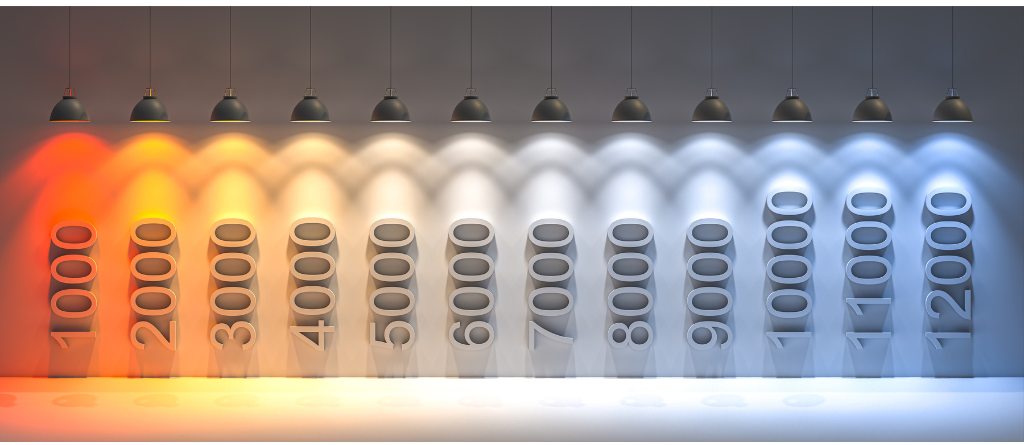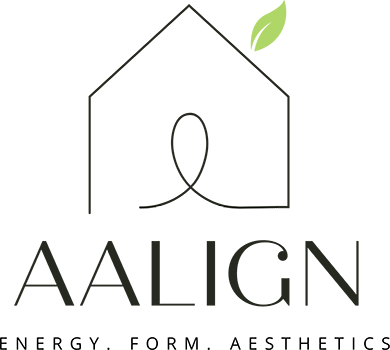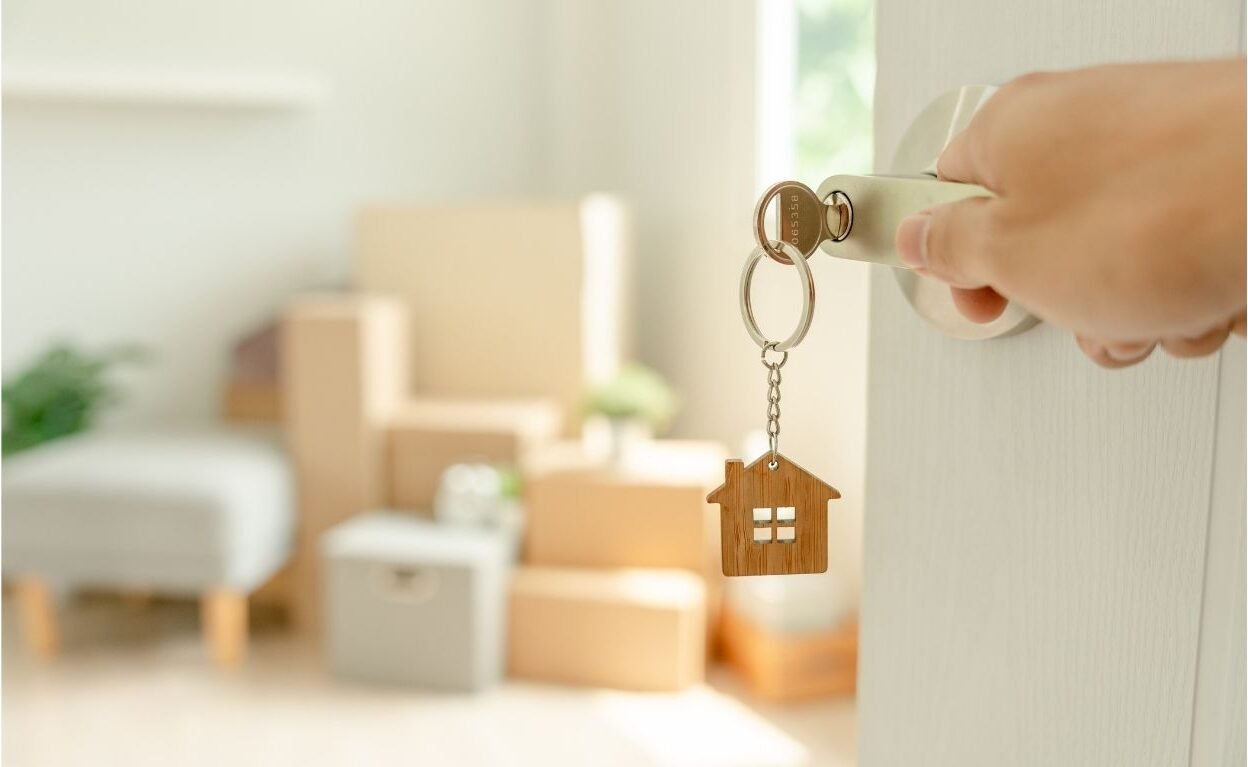Spending time in natural sunlight brings a wealth of health benefits. It uplifts our mood, eases stress and anxiety, and promotes a balanced sleep-wake cycle for better rest. Additionally, soaking in the sun boosts Vitamin D production, fortifying our bones and immune system. It also sharpens cognitive function and enhances productivity.
But do you know that not all light is created equal?
While nothing compares to natural sunlight, full spectrum lighting comes pretty close, offering similar benefits when sunlight isn’t readily available.
Full Spectrum lighting provides a close alternative to natural daylight, providing
similar benefits when exposure to sunlight is not possible.
What Makes a bulb Full Spectrum?

In Simple terms, Full Spectrum bulbs are designed to mimic the strong, bright sunlight at noon. They typically have:
- Color temperature: 5000K or higher temperature
- Color Rendering Index (CRI): of 96% or higher
To verify that a bulb is truly Full Spectrum, check its package for both the CRI and Kelvin values. These values will indicate whether the bulb emits a wide range of colors similar to natural sunlight.
“Daylight” bulbs aren’t the same as “full spectrum”. Daylight bulbs have a lot of blue, but not enough red spectrum. As a result, it can be hard to see paint, fabric, and materials in their true colors.
Full Spectrum is ideal for designers, artists, and architects since it provides brighter, whiter light with the improved color accuracy required for projects.
Advantages of Full Spectrum Lighting

UV light from the sun can be harmful in excess, but it’s essential for our health in the right amounts.
In a study, students exposed to fluorescent lighting without full spectrum showed signs of hyperactivity, irritability, and fatigue, impacting their attentiveness in class. On the other hand, students in classrooms with full spectrum lighting excelled academically, displayed better focus, and felt calmer.
Advantages of Full Spectrum Lighting:
- Improves academic performance, attention, and employee productivity.
- Help regulate cholesterol levels, melatonin, and serotonin production in the body, which promotes better sleep and overall health.
- Decrease cortisol levels, reduce symptoms of anxiety and stress.
- Light therapy with full spectrum lighting increases color perception, improves visual clarity and reduces eye strain.
- Boost sales in retail settings by making products appear more vibrant and attractive to customers.
- Improve mood and mental clarity, which enhances workspace productivity.
- Aids indoor plant growth by providing the full range of light wavelengths plants need to thrive.
- Synthesizes Vitamin D in the body, which is essential for healthy bones and immune function.
- It treats seasonal affective disorder.
Each brand we share is carefully selected to support your journey toward healthier living spaces. Through our affiliate links, you can easily access products, allowing us to earn a small commission at no extra cost to you.
(For the full selection of brands & products, we invite you to visit our shop page).
A Few Trusted Full-Spectrum Lighting Brands
Full-spectrum lighting not only improves color rendering but also supports mood, productivity, and overall well-being. Below are some trustable full-spectrum lighting brands available on Amazon.
1. Norb Lighting
Why it’s great: Known for their dedication to health-focused lighting, Norb Lighting’s products include bulbs designed for different purposes, such as NorbSLEEP for better rest or NorbFOCUS for improved productivity. They’re perfect if you want specialized solutions for various needs at home or work.
Top benefit: Their bulbs replicate sunlight’s spectrum, promoting energy, focus, and relaxation while being easy on the eyes.
2. Chromalux® by Healthlighting
Why it’s great: Chromalux® bulbs are crafted in Sweden and feature unique neodymium glass, filtering out yellow and dull light. These bulbs brighten up spaces naturally, enhancing color vibrancy.
Top benefit: They’re ideal for those who prioritize ambiance and clarity, providing natural light that’s warm and inviting without harsh glare.
3. Philips Ultra Definition
Why it’s great: Philips combines quality with affordability in their Ultra Definition series. Their full-spectrum bulbs distribute light evenly, offering high color accuracy and a comfortable glow.
Top benefit: A budget-friendly choice that doesn’t compromise on performance.
5. GE Sun Filled
Why it’s great: GE’s Sun Filled series offers full-spectrum lighting that reduces glare and delivers vibrant colors without harsh shadows.
Top benefit: These bulbs are family-friendly, making them a solid option for kitchens, playrooms, and living areas.
6. Sylvania Natural Series
Why it’s great: Sylvania’s Natural Series replicates daylight with high CRI bulbs that are perfect for task lighting and relaxation.
Top benefit: Their products balance vibrancy and natural tones, enhancing your home’s aesthetic.
What is Seasonal Affective Disorder?

Every year, five million Americans suffer from winter blues, also known as Seasonal Affective Disorder (SAD). People often feel depressed, tired, withdrawn, and gain weight during the winter. This is because they spend more time indoors and don’t get as much natural light.
The World Health Organization (WHO) has recognized “SAD” as an affective illness, and satellite therapy is the recommended treatment using full spectrum lighting.
Patients usually experience improvement within a week of treatment or less, feeling more uplifted, productive, and alive again.
Sources for Full Spectrum Bulbs in Warm Color Temperatures

Full spectrum lighting is available in both cool and warm color temperatures, depending on the light source or bulb. Different color temperatures create different effects and serve different purposes.
For instance, a warm full spectrum bulb can be used in a living room to create a cozy and inviting ambiance. In contrast, a cooler full spectrum bulb promotes alertness and focus at work. Depending on your needs, choose the right color temperature.
The following full spectrum light sources emit “warm” color temperatures, between 2700K and 3500K:
- Full spectrum LED bulb
Provide a warm, cozy glow while providing a wide variety of colors similar to incandescent bulbs.
- Full spectrum halogen bulb
Warm, natural light with accurate color reproduction is provided.
- Full spectrum incandescent bulb
Incandescent bulbs with full spectrum versions emit warm-toned light.
- Full spectrum fluorescent tube
Commonly used in commercial settings, and it comes in warm color temperature.
- Full spectrum desk lamps or task lights
Warm-toned, full spectrum lighting, ideal for reading, working, or tasks requiring precise color rendition.





